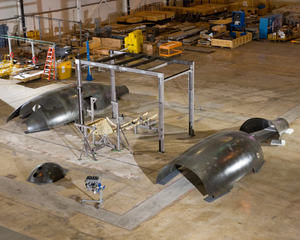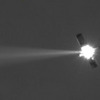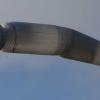Phantom Eye is not the next installment in the James Bond movie franchise. But that doesn't mean it's any less exciting.
It's Boeing's first unmanned, liquid-hydrogen powered, high altitude long endurance (HALE) aircraft, which will feature a 150-foot wingspan and be capable of flying for more than four days at altitudes up to 65,000 feet while carrying a payload of up to 450 pounds.
"The essence of Phantom Eye is its propulsion system," said Darryl Davis, Boeing Phantom Works president. "After five years of technology development, we are now deploying rapid prototyping to bring together an unmanned aerial vehicle [UAV] with a breakthrough liquid-hydrogen propulsion system that will be ready to fly early next year."
 The propulsion system (engine, turbo chargers and engine control system) successfully completed an 80-hour test in an altitude chamber on March 1, clearing the way for further development of the project.
The propulsion system (engine, turbo chargers and engine control system) successfully completed an 80-hour test in an altitude chamber on March 1, clearing the way for further development of the project.Phantom Eye is designed to carry out missions such as intelligence gathering, reconnaissance, surveillance and communication.
Boeing also is developing a larger HALE that will stay aloft for more than 10 days and carry payloads of more than 2,000 pounds, as well as building "Phantom Ray," a fighter-sized UAV that will be a flying test bed for advanced technologies.
"We believe Phantom Eye and Phantom Ray represent two areas where the unmanned aerial vehicle market is heading, and rapid prototyping is the key to getting us there," said Dave Koopersmith, Advanced Boeing Military Aircraft vice president.
Phantom Ray evolved from the X-45C program. It is scheduled to make its first flight in December.












Leave a comment